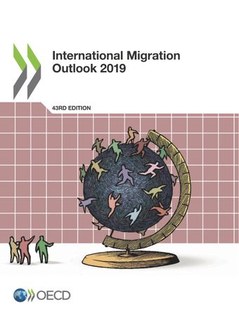Far more labour migrants to Poland than Poles to Norway
For the second year running, Poland has received more labour migrants than any other OECD country. Meanwhile, fewer Poles travel to other European countries to work. This could lead to challenges for low-pay sectors in Nordic countries.
Among the newest EU member states, Poland still dominates when it comes to labour migration to Norway, Denmark and Iceland. But Poland itself tops the statistics for the number of labour immigrants in the OECD Migration Outlook 2019.
The report, published on 18 September, shows that Poland issued 1.1 million short-term permits to temporary and seasonal labour migrants from non-EU countries in 2017. In addition, 21 000 intra-EU postings were recorded in 2017, an increase of 16% compared to 2016.
248,000 Poles emigrated to other OECD countries in 2018. That is 5.7% fewer than in 2017. Most travel to Germany, followed by the UK and the Netherlands.
Only 28 «new» Poles to Norway
Poles still represent the largest group of immigrants to Norway (12%) and Denmark (7%), while immigrants from former USSR nations top statistics in Finland (15%) and Syrian immigrants are top of the list in Sweden (9%). According to Statistics Iceland, Polish workers make up 40% of immigrants there.
Figures from Statistics Norway show 98,200 Poles were living in Norway in 2017, yet only 3,600 of them were labour migrants. Polish workers have long been important to the Norwegian labour market, which for many years has struggled to recruit Norwegian workers for low-wage occupations – especially within heavy industry and the construction sector.
But many Polish workers have returned home to Poland in recent years, which led to record-low net immigration from Poland to Norway in 2018 of only 28 people, according to the Fafo research foundation.
Is the trend about to turn?
Since Poland joined the EU in 2004, more than 1.7 million Poles have travelled to other Western countries to find work, or as family members.
The graph compares the inflow of foreign population to Norway and Poland. For many years Norway accepted more foreigners than Poland, but shortly before 2015 Poland accepted more foreigners and by 2017 the number was three times as high as in Norway. Source: OECD
The construction sector and seasonal agriculture production in both Norway, Denmark and Iceland have benefited a lot from Polish labour for many years, but there are several signs the trend is about to turn.
The number of Polish migrants in other EU countries has started to fall, and Polish authorities have also taken action to stop new generations of young workers from emigrating. From 1 August this year, Polish workers under 26 can earn up to €20,000 a year at home without paying any income tax. Nearly two million people come within this category, and the Polish government hopes this will make it less attractive for them to travel to other EU countries in order to look for work.
-
 OECD Migration Outlook
OECD Migration Outlook
-
An annual report that analyses recent developments in migration movements and policies in OECD countries. It also examines the evolution of labour market outcomes of immigrants in OECD countries. This year’s edition includes two special chapters, one on the contribution of temporary migration to the labour markets of OECD countries and the other on the long-term integration effects of family presence.
 Follow us on Facebook
Follow us on Facebook
